#13 - Solana Pay in Practice: The Challenge and Solution
Author: @akirawuc
[Updated at 2022.10.20]
See the example repo:
TL; DR
What is Solana Pay?
What is the current challenge?
How to improve it by a Escrow program?
Overview of Solana Pay
What is Solana-pay? What can it do?
What is the mechanism?
How we can make it better?
Quick Introduction
What is Solana-pay?
A standard protocol to encode Solana transaction requests within URLs to enable payments and other use cases. -- from their GitHub repo
How Does It Work?
Basic version We've mentioned that Solana pay is a protocol for payment, where the structure is as follow:
Web app to mobile wallet 
Web app to browser wallet 
Mobile app to mobile wallet 
Executing Details
clone the repo, and run the example code in solana-pay/point-of-sales
directly demo how it works, and open up the console to show that how a transaction is confirmed.
Create a transfer request
Current Challenge
Mechanism
Once a payment (a transfer request) on Solana pay is created, it will generate an address called reference, in order to check whether the payment is fulfilled.
System from the merchant side will continously check if there're transaction under the reference address, and will stop the checking if and only if the user fulfilled the payment. However, since the 'reference' is just a random address, it didn't have any preventing mechanism for customers to fulfilled it again.
Problem: Repeat fulfilled, can use the same QR code to deposit as many times as you like
Essentially, the spirit of payment is a trade of value, where customer pay for merchant's product. Once the customer paid for the payment, the merchant will need to take the responsibility to either send product to the customer or refund. However, it faces difficulties in practice.
To analyze, we can separate a payment into 3 conditions, which are
complete (fulfilled exactly once)
repeated fulfilled (fulfilled multiple times)
incomplete (never fulfilled)
where we only need to discuss about the last 2:
If the payment is repeated fulfilled:
Merchant can't prevent, and even have difficulty to notice it. By the mechanism currently, merchant's system will stop checking for the transaction under the 'reference' address once the payment is fulfilled.
The only possibility that the merchant can notice could only be either their system won't stop checking transaction under the 'reference' address or by checking every order manually themselves.
If the payment is never fulfilled:
First, the check of the payment will continue forever, until being turned off manually.
More importantly, if the order of the payment included a limited edition product, how can the merchant be able to handle that all manually?
if check quantity before payment create: how can they released those unpaid orders and prevent the customer to fulfilled it?
if check quantity after payment create: how to stop customers from paying after the product is sold out?
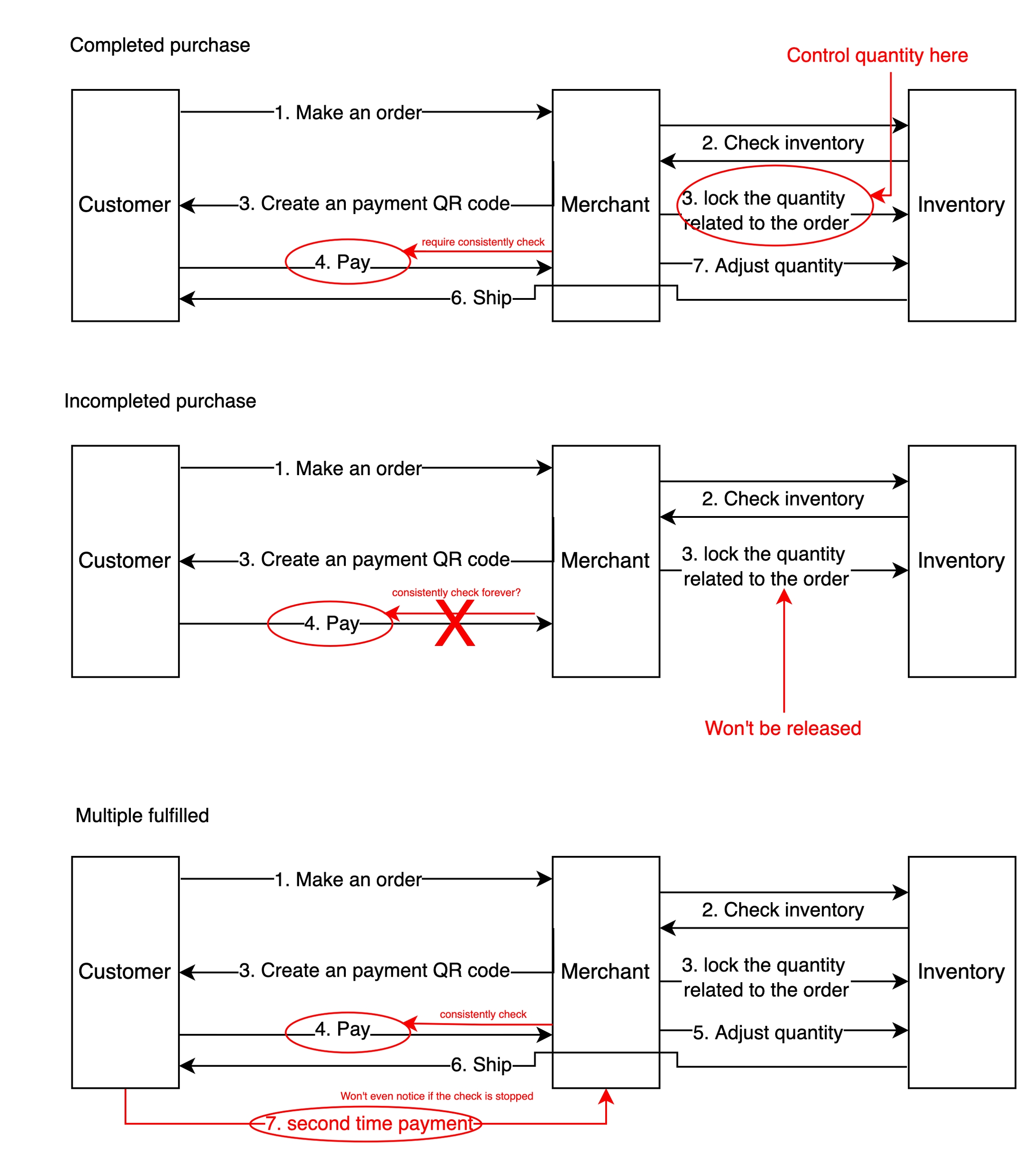
Our Proposal to Improve Solana Pay
Time: will need to check if the transaction have been pending for a while
One time deposit: only the first time deposit should be success.
The protocol have some time limit, and more specific is better, one payment only accept one time deposit. We can use the new feature called Transaction Request on Solana Pay recently:
Instead of using transfer request to do the transfer, switch to use the transaction request.
Architecture
Off-chain
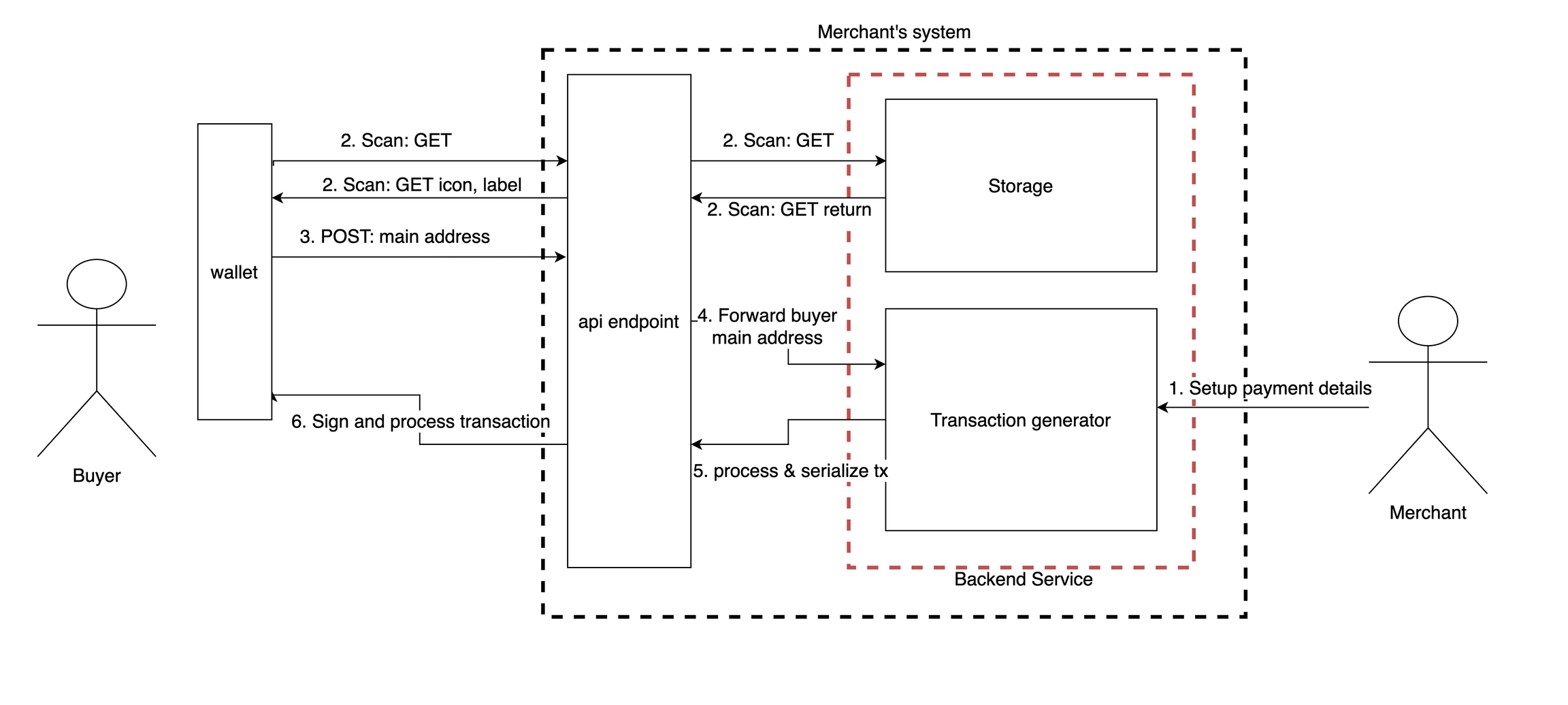
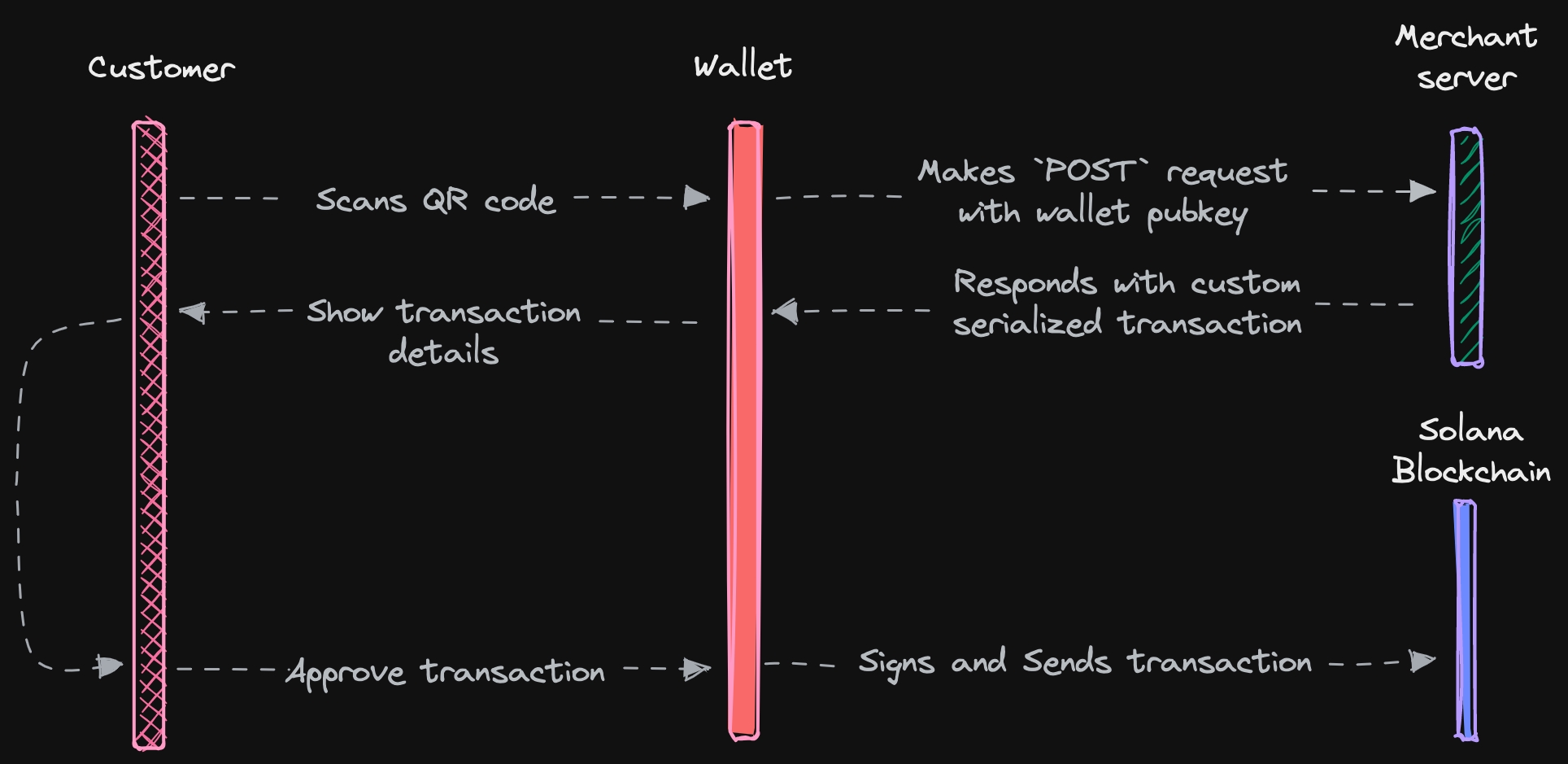
On-chain
Use the escrow program!
Check out: https://book.solmeet.dev/notes/intro-to-anchor With the repo: https://github.com/ironaddicteddog/anchor-escrow
Notice that paying can just be consider as a single side escrow, while the initializer part won't need to transfer token into the vault, only the taker (buyer here) need to.
Initialize
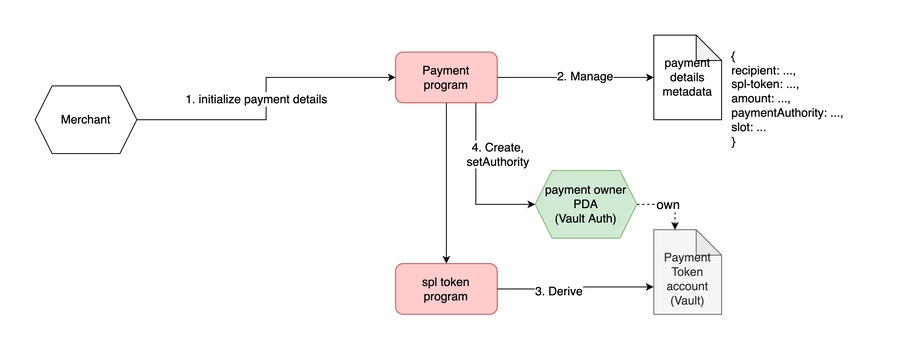
Pay
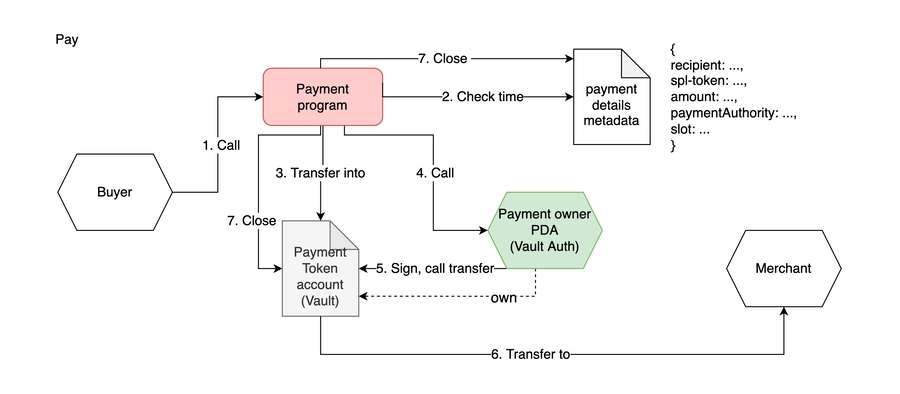
Cancel
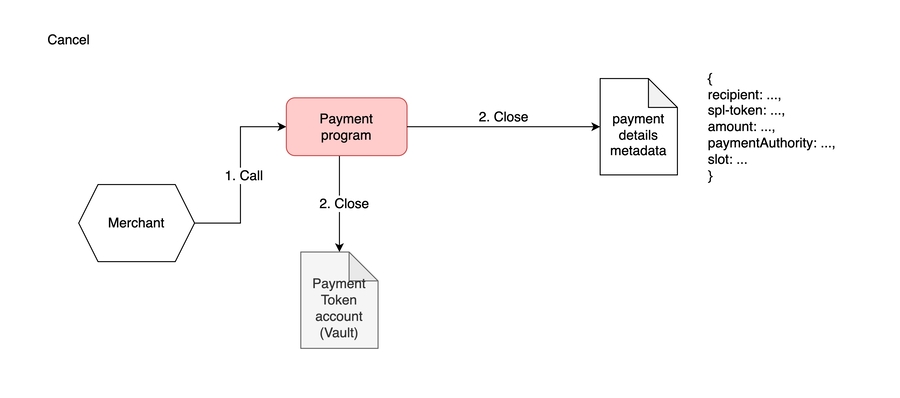
References
https://solmeet.dev/
https://book.solmeet.dev/notes/intro-to-anchor
https://github.com/ironaddicteddog/anchor-escrow
https://github.com/solana-labs/solana-pay
https://docs.solanapay.com/
https://www.anchor-lang.com/
https://coral-xyz.github.io/anchor/ts/index.html
https://solana-labs.github.io/solana-program-library/token/js/
Last updated